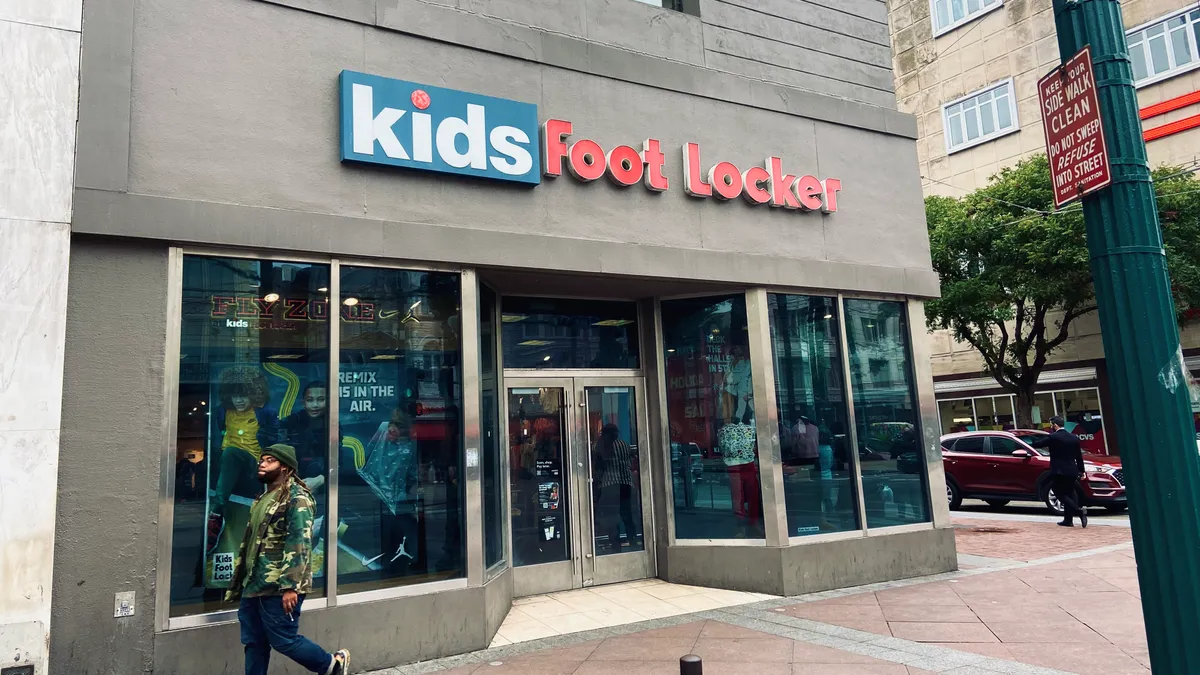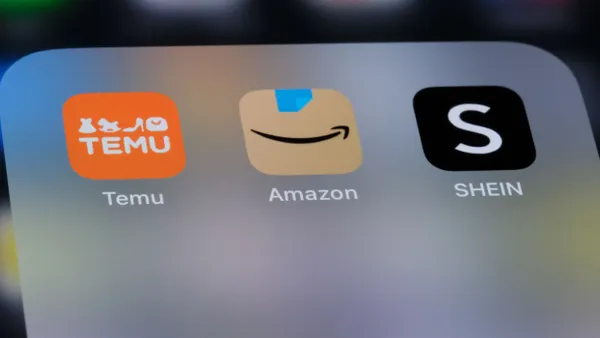Dive Brief:
- In CEO Mary Dillon’s first earnings call at Foot Locker, she announced an effort to “simplify” the Foot Locker business. The company will no longer expand to Japan in Q4 thanks to the strength of its new banner, Atmos, in that region, and the retailer is winding down two of its European joint ventures.
- Dillon outlined her other priorities for the company as well, which include building out Foot Locker’s omnichannel capabilities, improving the FLX loyalty program, upgrading its technology and optimizing costs.
- Net sales in the third quarter fell 0.7% to $2.2 billion, but they were up 3.3% in constant currency. Comps increased 0.8% year over year and net income fell about 40% to $96 million, per a company press release.
Dive Insight:
Just a few months into her tenure at Foot Locker, Dillon is already making changes and plotting improvements at the retailer.
“This is a growth category with a long runway ahead,” Dillon said, with tailwinds she believes will last for years. “Foot Locker has a tremendous amount of brand awareness and latent brand equity that I believe is not yet fully tapped.”
Dillon’s plans for the retailer include shifting “from being product-led to consumer-led” and what she calls a “tremendous opportunity” to improve the company’s loyalty program with more personalization and a better value proposition for members. The company has shaken up leadership in technology and marketing to pursue the new strategy, according to Dillon. Improving the retailer’s online presence is also a priority.
“At 16%, our e-commerce penetration is below where it should and can be,” Dillon said.
But not everything about the Foot Locker strategy is changing. Dillon will continue to pursue the retailer’s diversification efforts as Nike moves further away from the retailer. She noted that 80% of Foot Locker’s highest frequency shoppers buy multiple brands and that Foot Locker remains underpenetrated in most of the brands it sells.
“Choice is something that consumers want and we see that at Foot Locker,” Dillon said, likening it to the beauty space where customers also buy across brands. “Having said that, of course our relationship with Nike is very important. It’s strong. We’ve been able to partner with Nike to provide our customers with some increased demand signals that we saw in the quarter.”
That relationship will continue to be important because Nike’s shift is already impacting Foot Locker, according to GlobalData Managing Director Neil Saunders.
“Nike lines still sell well at Foot Locker, but the weaker range and assortment – especially for new Nike styles – means the chain misses out on some trade,” Saunders said. “Our impression is that some of this is offset by rapidly growing growth from other brands which the more casual shopper is happy to consider and convert to. However, Nike aficionados are now shopping more at other chains or are going direct to Nike for their purchases.”














